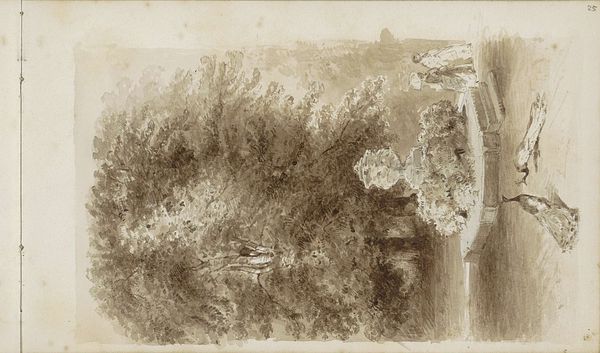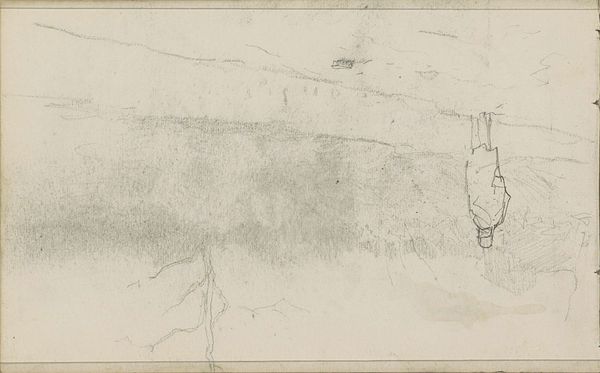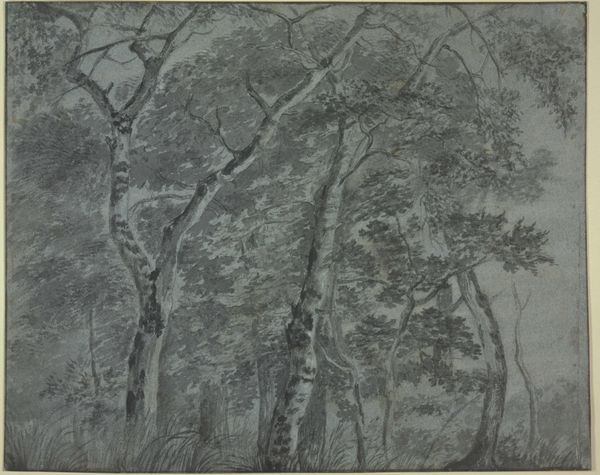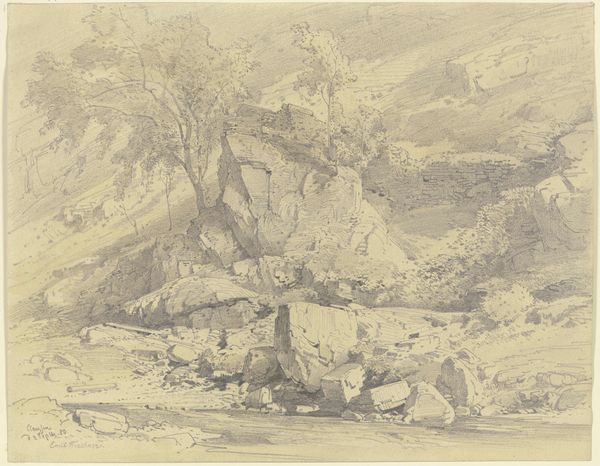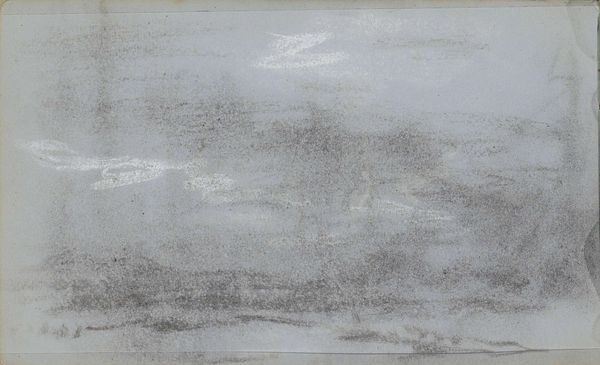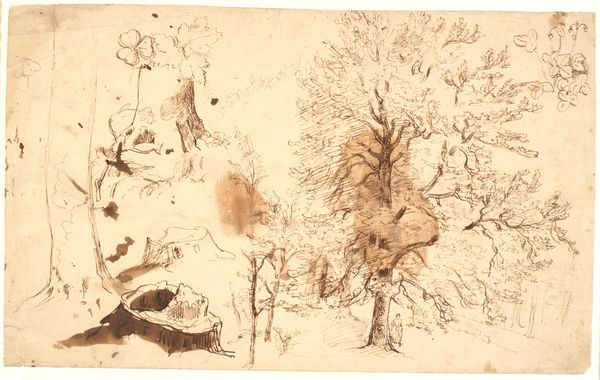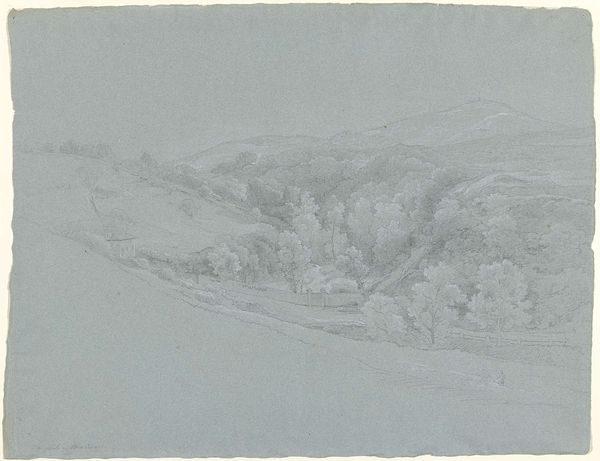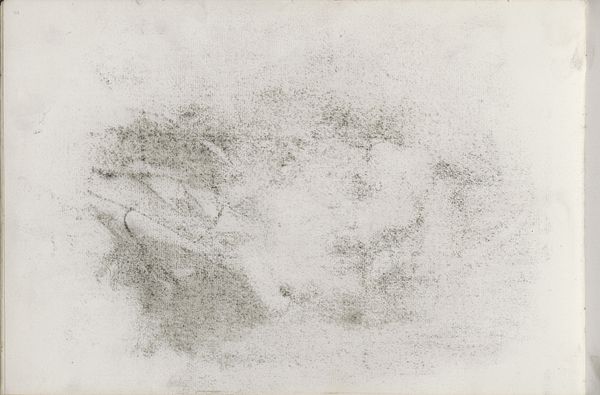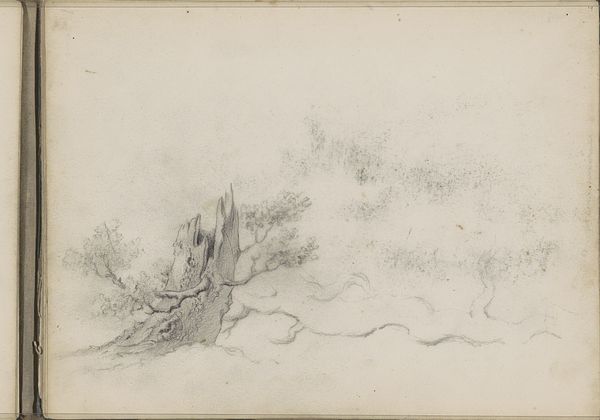
drawing, chalk
#
drawing
#
abstract expressionism
#
natural shape and form
#
baroque
#
rough brush stroke
#
french
#
landscape
#
possibly oil pastel
#
carved into stone
#
chalk
#
paint stroke
#
14_17th-century
#
watercolour bleed
#
natural texture
#
organic texture
#
watercolor
#
italian
Copyright: Public Domain
Claude Lorrain made this drawing of the waterfall of Tivoli using pen and grey ink with grey wash over traces of graphite. Lorrain was working in 17th century Rome, a period when the cultural elite and aristocracy sought an idealized vision of nature. This depiction of Tivoli’s landscape, with its emphasis on light and atmosphere, created an emotional experience of the natural world. It was a move away from traditional, religious representations of the landscape. Lorrain's work appealed to powerful patrons who were eager to display their refined sensibilities. This drawing isn't just a picture; it’s a statement about power, taste, and the desire to shape nature to reflect specific social values. Lorrain’s art shaped how the elite saw themselves in relation to the world. The Waterfall of Tivoli invites us to reflect on how landscapes become mirrors of cultural identity.
Comments
No comments
Be the first to comment and join the conversation on the ultimate creative platform.


